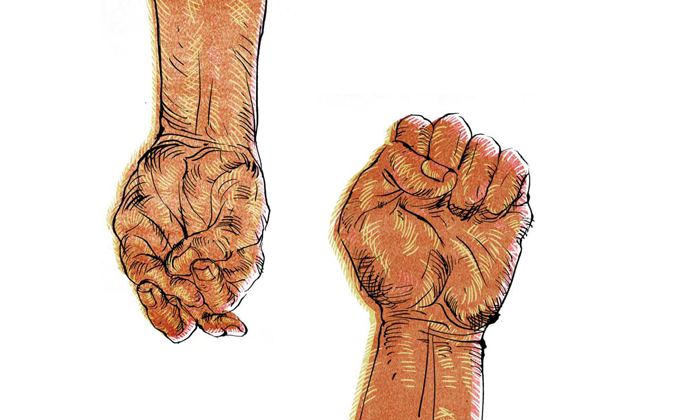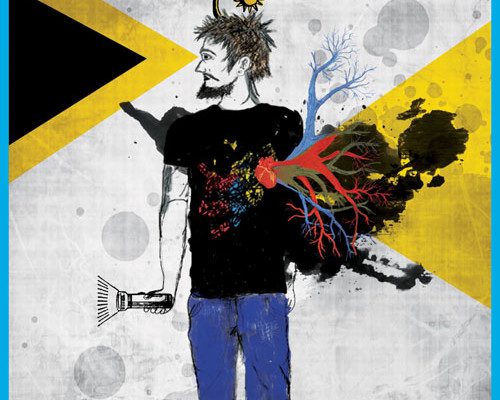Ideologies bring people together and then they drive them apart. But wait. This isn’t like communalism v/s secularism. It is about the wedges that divide the hundred shades within an ideology.
Ah, summertime: mangoes starting to appear in the markets; people sleeping on their terraces to take advantage of the cool nighttime breezes; refrigerated water carts winding their way through the city streets; progressive groups viciously attacking one other.
Wait, that last one is not confined to any one season. On the occasion of Ambedkar Jayanti (April 14), I was thinking of writing a paean to this pioneering leader, the culture of protest and pride he inspired. But then I realized that many Ambedkarites are using the occasion to debate with each other. Not that this phenomenon is exclusive to Dalit activists: it equally plagues feminists, Marxists, queer activists, and generally any group that is launching a radical attack on the dominant culture.
In fact, the tendency of radical groups to split up is so widely acknowledged that it has become almost cliché. More than thirty years ago, Monty Python skewered this tendency brilliantly in their movie The Life of Brian, set in the time of Jesus. The movie follows one of Jesus’ contemporaries, a man named Brian, who is mistaken for the Messiah. But before this happens, he joins the People’s Front of Judea, an anti-Roman revolutionary group that is hopelessly incompetent. Their main enemy is the Judean People’s Front. And don’t even get them started on the Judean Popular People’s Front or the Campaign for Free Galilee or the Popular Front (which is down to just one member). This Monty Python bit has wormed its way into the British consciousness – Tony Blair even referenced it during a round of Prime Minister’s Questions! Say what you will about New Labour and their regressive policies; I’m still impressed that a head of state is referencing an absurdist, subversive comedy troupe.
“Inevitably, when these internal fights have become sufficiently acrimonious, voices emerge advising restraint and reconciliation. To oversimplify: can’t we all just get along?”
If Monty Python has already covered this ground, and three decades ago at that, what’s left to say? At least I can add this: the way these internal fights play out has changed over time, as they make use of new media forms and cultural contexts. The most recent tempest-in-a-teapot started out conventionally enough, before taking a Web 2.0 turn. A Marxist group (one of the countless offshoots that exist in India) organized a conference on “The Caste Question and Marxism,” and invited the vocal activist Anand Teltumbde to speak. Teltumbde is known for his attempts to bring Marxist and Dalit perspectives together, and at the conference, he was involved in a spirited debate with some of the organizers. After the event, a Hindi newspaper published some of Teltumbde’s more incendiary claims, taken out of context, of course (we are in the age of the instant sound bite). Some Ambedkarite groups (again these are a diverse bunch with varying ideologies) immediately attacked Teltumbde’s remarks.
Teltumbde responded with a lengthy (7000-word), scathing attack on both the conference organizers and the Ambedkarites who jumped at the bait. The article was published in a couple of alternative news websites and blogs, and then repeatedly re-blogged. The telling title of his article: “To the Self-Obsessed Marxists and Pseudo Ambedkarites.” Not to be outdone, the conference organizers responded with a 9000-word rebuttal, taking apart Teltumbde’s response paragraph by paragraph. Also, this being 2013, they posted a link to the YouTube video of the entire original debate.
At least the conference organizers have somewhere to go home to – they can seek their solace in Marx and Lenin. Teltumbde has nowhere to go, rejected by both the Marxists and Ambedkarites. His polemical style and his caustic tone don’t help him make friends, but his case nonetheless points to the difficulty of bridging gaps between rival groups.
After reading about the Teltumbde kerfuffle, I stumbled upon a poignant profile of the radical feminist Shulamith Firestone, published in the New Yorker magazine. Firestone was a brilliant, passionate proponent of radical feminism, both in theory and practice. But her personal life was marked by tragedy, largely because of her rejection and ostracization from the very feminist groups she helped to found. Looking at these examples, past and present, maybe we can reformulate Marx: the history of all hitherto existing radical groups is the history of internal struggles.
Inevitably, when these internal fights have become sufficiently acrimonious, voices emerge advising restraint and reconciliation. To oversimplify: can’t we all just get along? But while it is common to point out the tendency of groups to schism, and almost as common to suggest that this tendency is self-defeating, I have yet to come across an in-depth, convincing analysis of why these splits are so prevalent. (And I say this in all modesty; I imagine someone has analyzed this incisively in the vast literature on radical politics. I just am not familiar with it.)
I can hardly give a convincing answer in the brief conclusion of this article. But as someone who thinks these struggles are important, I can put forward a few tentative guesses. First is the sheer scope and difficulty of what these groups are attempting. To fundamentally change the economic and social structure of society and to end the current patterns of domination: this is a daunting task, likely to be marked more with failures than with successes. Disappointments may lead to bickering and breakups.
On a related note, the harsh tone of intra-group arguments is worth considering. Perhaps this is a spillover from the devastating critiques these groups level at the existing system. Certainly, a critical attitude is needed when confronting the injustices and deep-rooted structural inequalities of the dominant systems. But is it possible that the acidic tone of these critiques is also burning away at intra-group bonds?
Finally, groups that focus on critiquing structural inequalities may ignore interpersonal dynamics that affect group functioning, dismissing such concerns as individualistic. There are rarely direct, open discussions on issues like the over-reliance on group loyalty or the effect of personal feuds on group leadership. I don’t want to minimize the existence of very real ideological divides about very important subjects, but debates that are supposedly ideological are sometimes actually manifestations of personal rivalries, power struggles and tensions between various identities and allegiances. Perhaps we can’t all get along, but at least we can talk a bit more honestly about why we’re fighting with each other instead of with our common foe.














